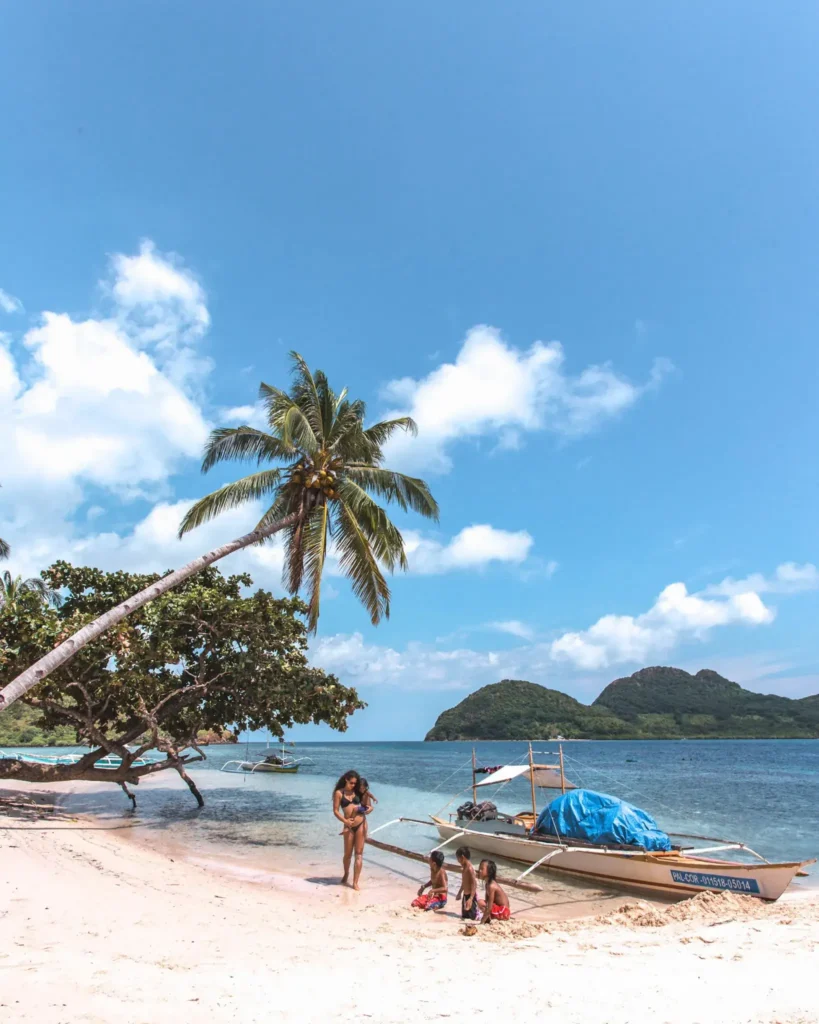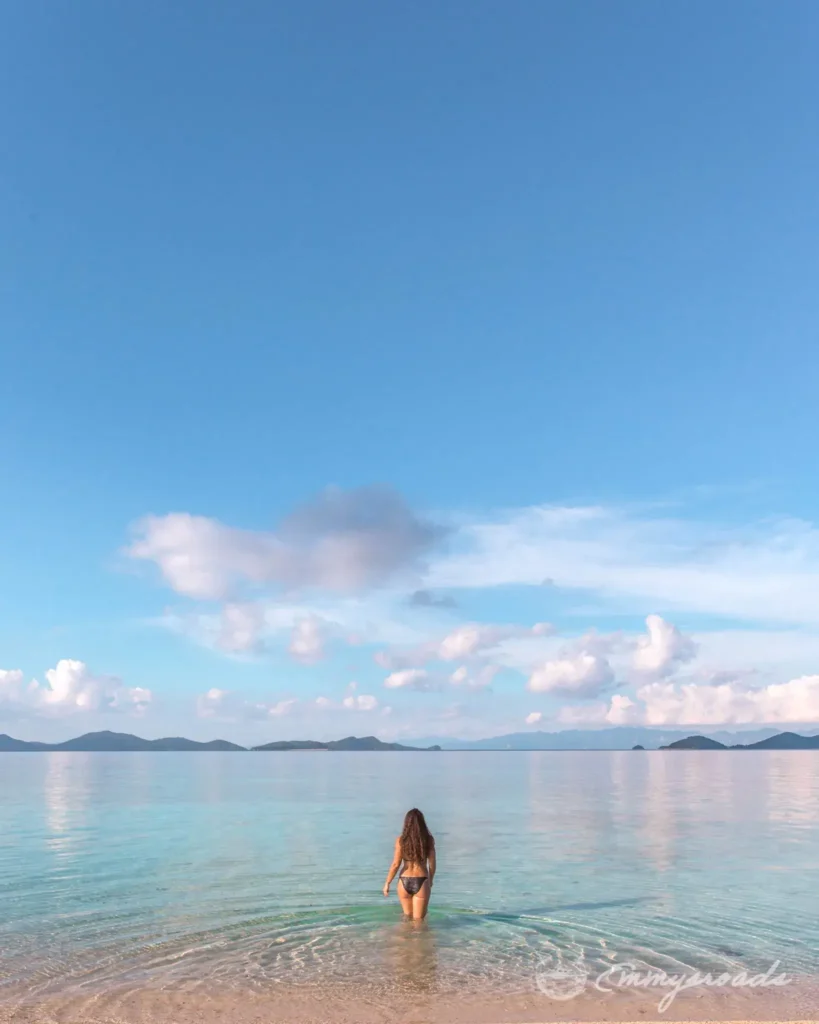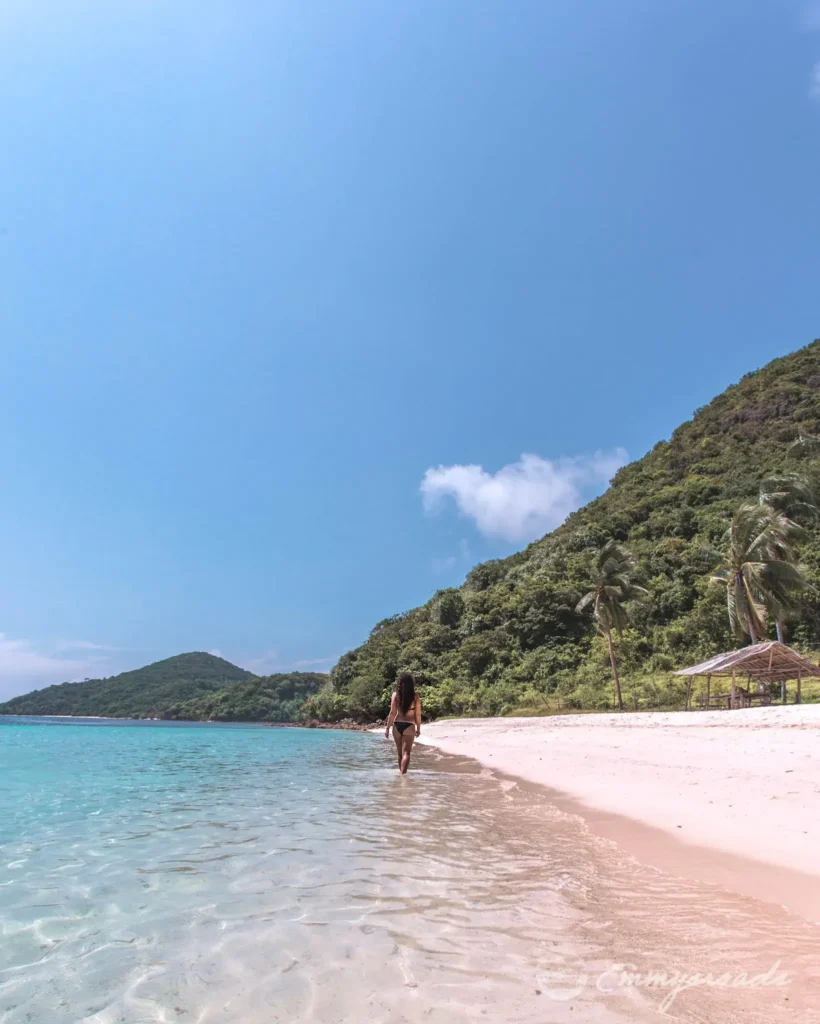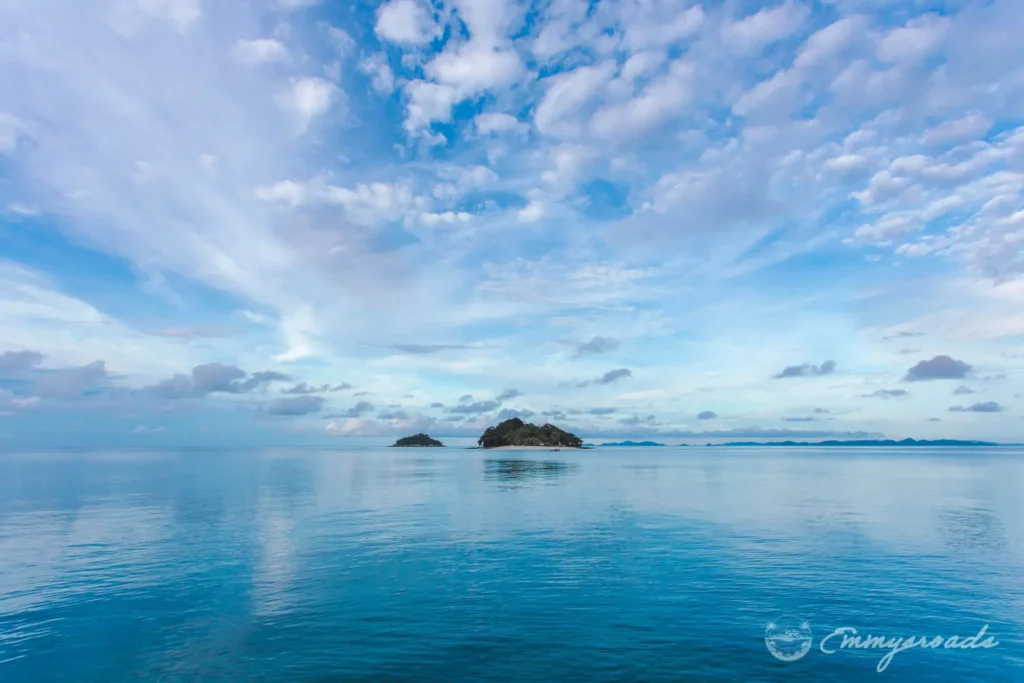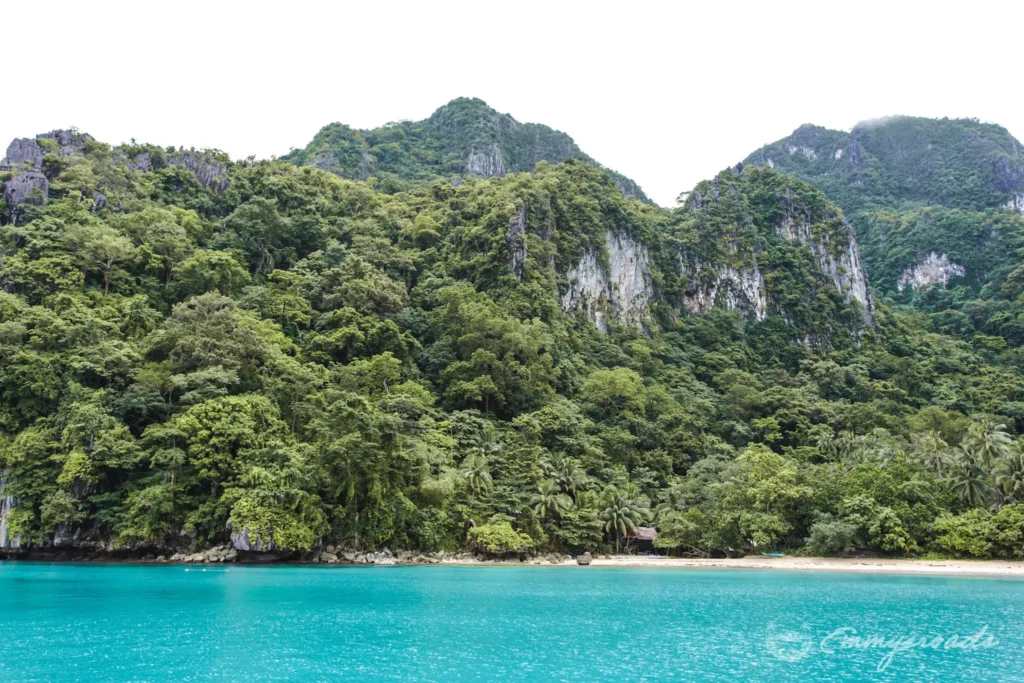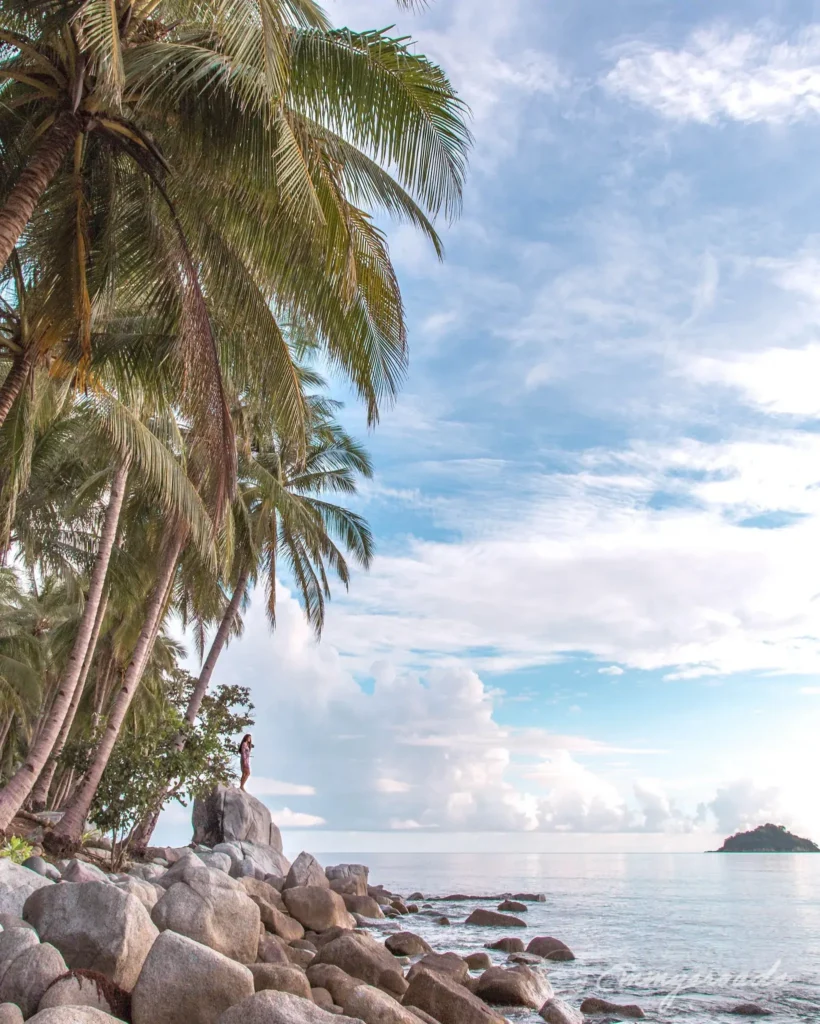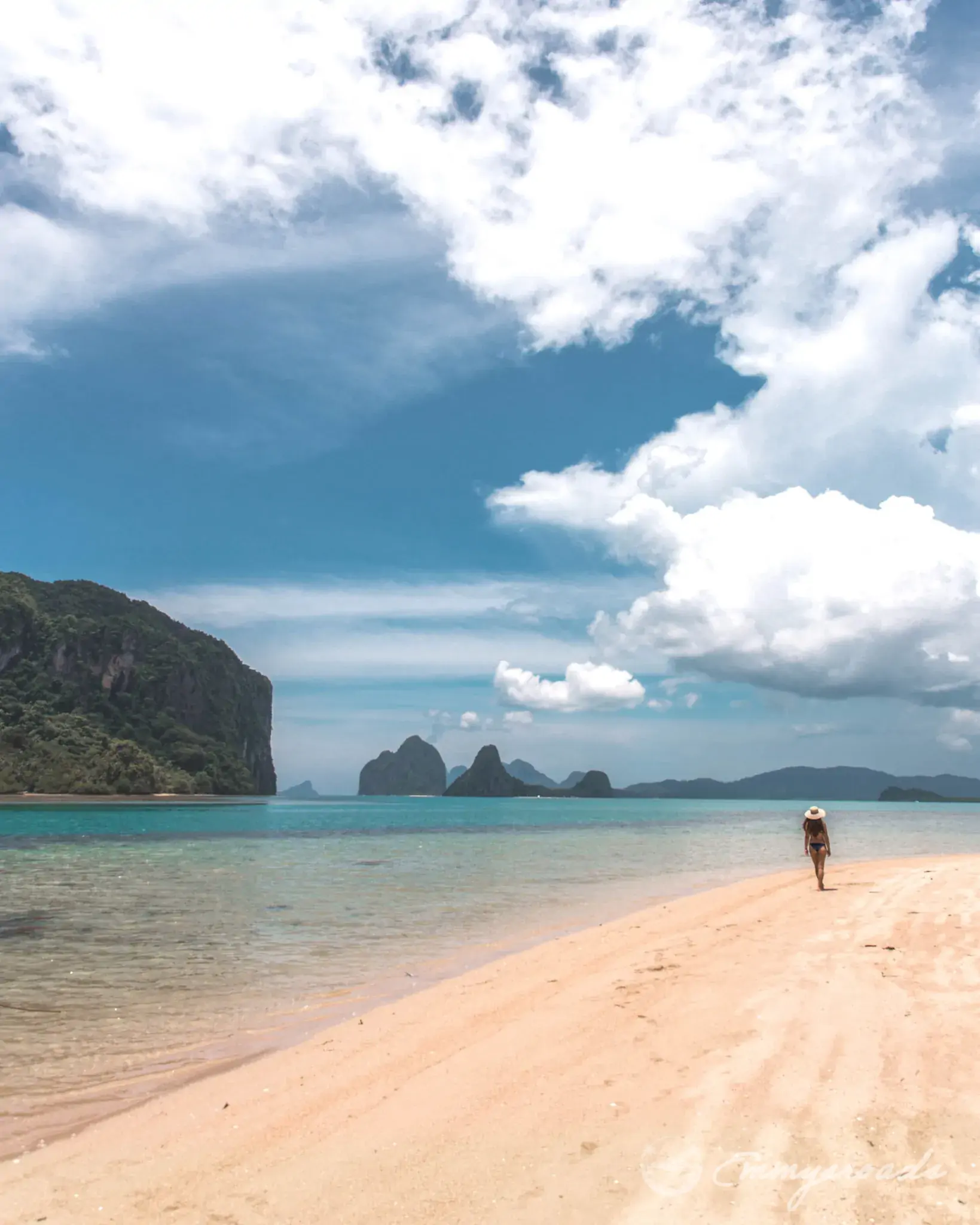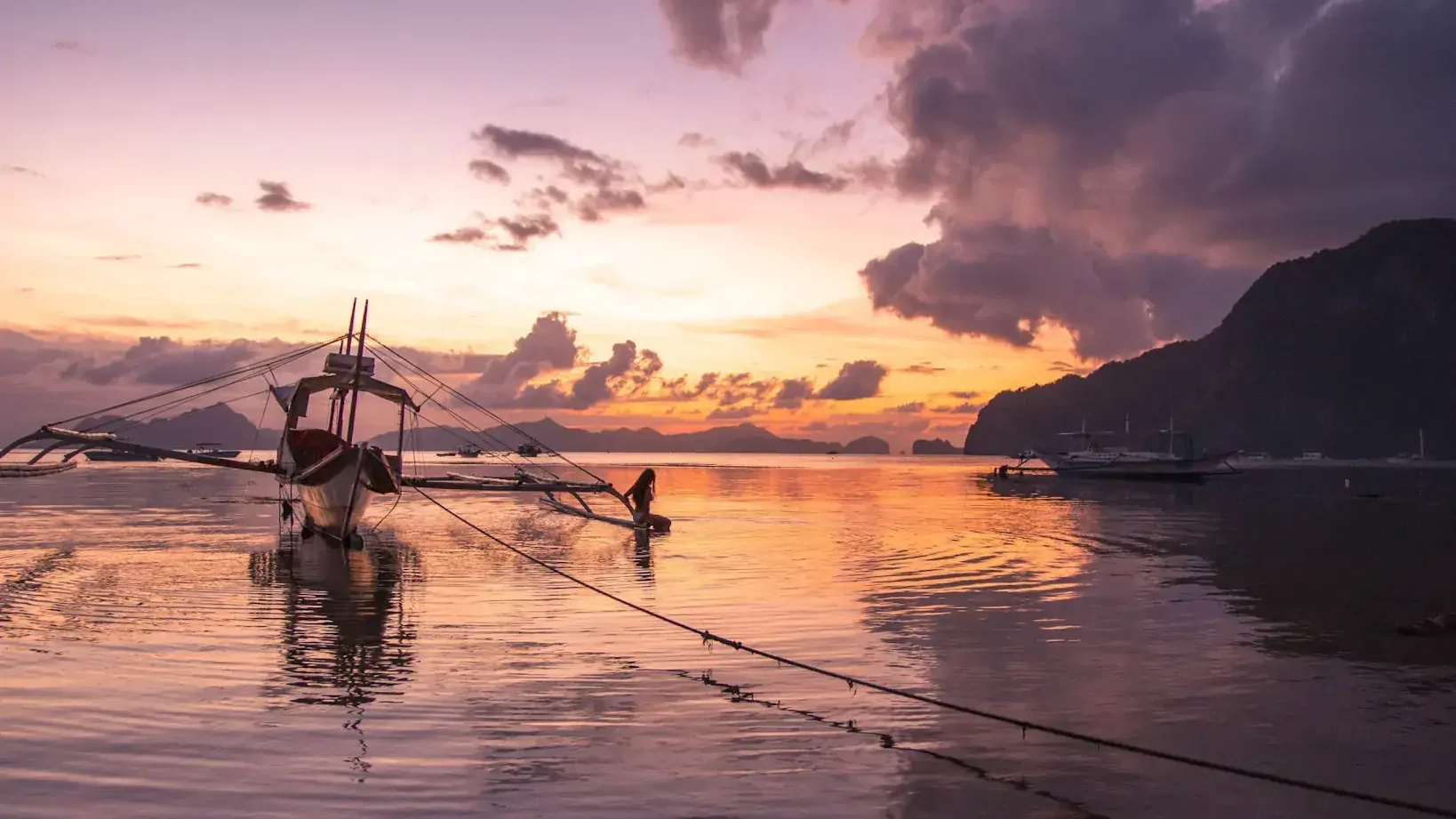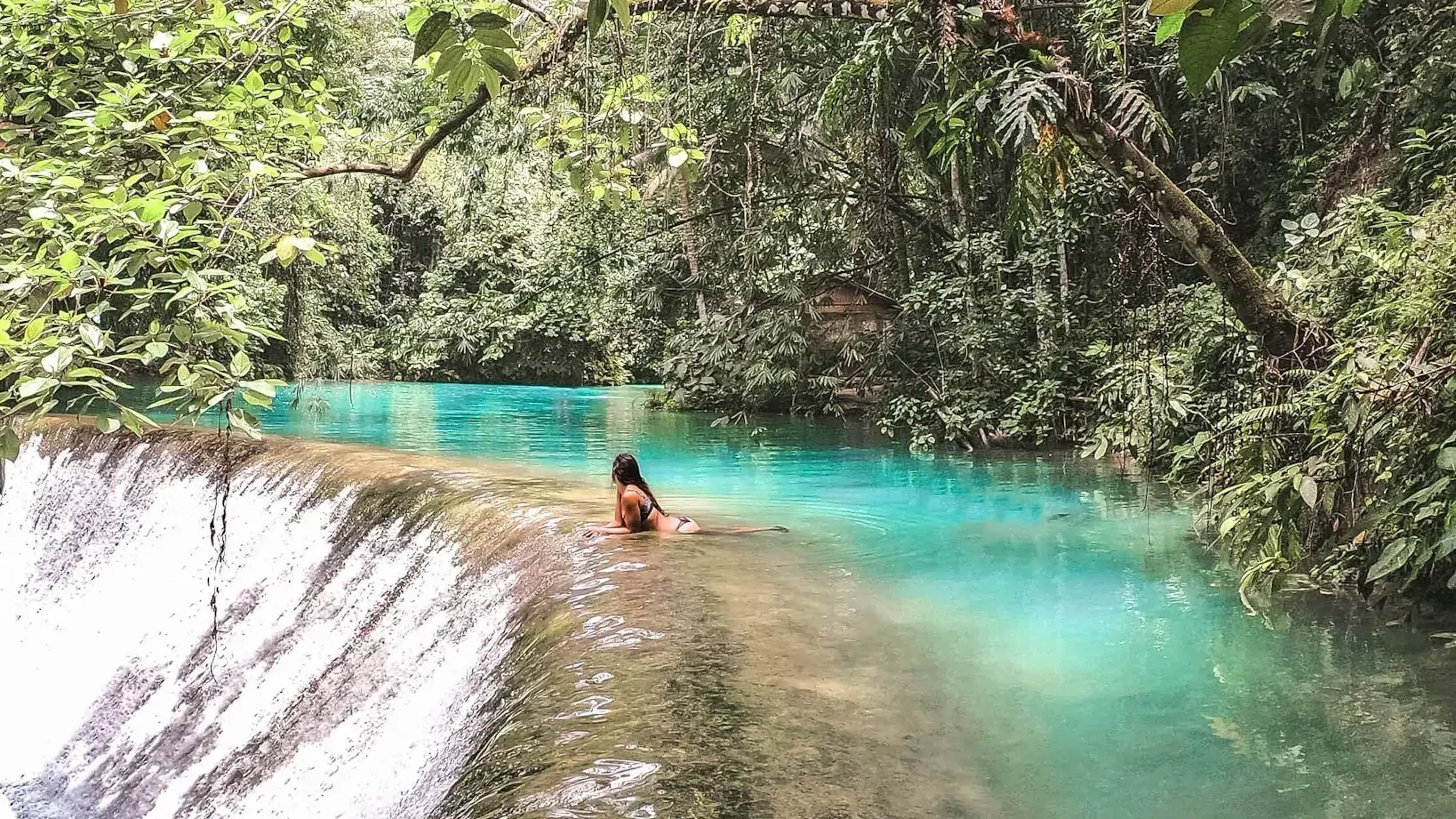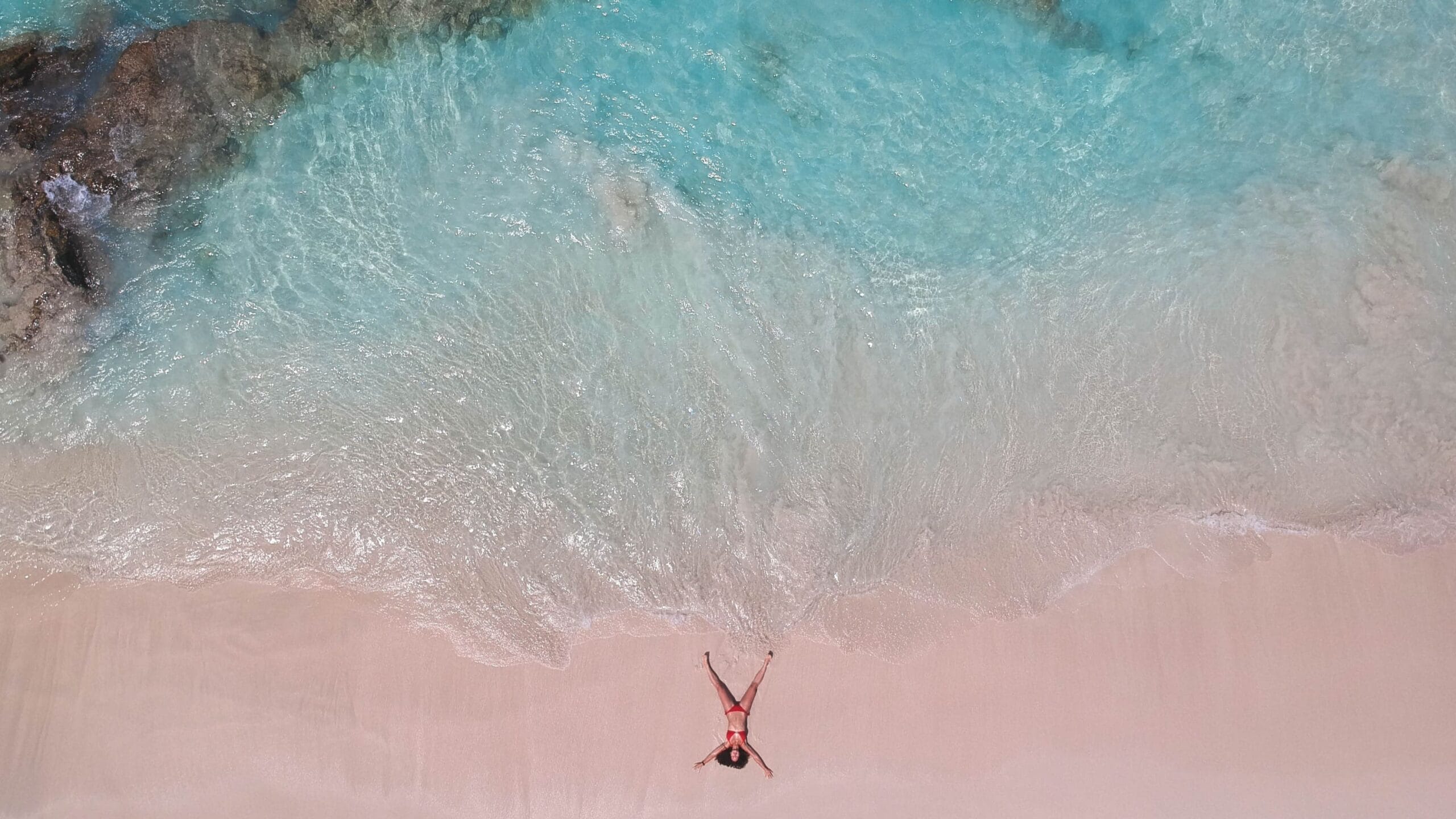
Let’s talk about the Philippines, a tropical paradise with some of the most jaw-dropping beaches and crystal-clear waters you’ll ever lay eyes on. If you’re a beach lover (and let’s face it, who isn’t?), this country is like your personal dream come true. I spent most of my time in El Nido, Coron, and Cebu, and each island was more beautiful than the last.
The country is divided into three main island groups: Luzon, Visayas, and Mindanao, each with its own unique landscapes, from white-sand beaches to lush mountains and tropical rainforests. The Philippines has a rich history, from being a Spanish colony for over 300 years to gaining independence in 1946. It’s also home to a diverse culture influenced by various periods of colonization, including Spanish, American, and Japanese. The official languages are Filipino (based on Tagalog) and English, but there are also over 170 regional languages spoken across the islands, making it a vibrant, multilingual country.
👉 Want to explore more gems across the Philippines? Check out my region-specific guides! Like this post on the jaw-dropping lagoons and secret beaches of El Nido, or this island-hopping escape through the crystal-clear lakes and epic dive spots of Coron. Oh, and don’t miss the waterfalls, and white-sand adventures in my guide to Cebu!
MENU
In this post:
Where to Go
The Philippines has over 7,000 islands, and while it’s impossible to explore them all in one trip, El Nido, Coron, and Cebu should definitely make your list. El Nido is a haven for beach lovers and adventure seekers, with its dramatic karst cliffs, lagoons, and some of the best island-hopping in the world. Coron is perfect for divers, with its sunken WWII wrecks and vibrant coral reefs. And Cebu? Well, it’s the perfect mix of beach relaxation and cultural exploration, with ancient landmarks like Magellan’s Cross and the beautiful Kawasan Falls. Whether you’re looking for adventure, relaxation, or a little bit of both, these islands have you covered.
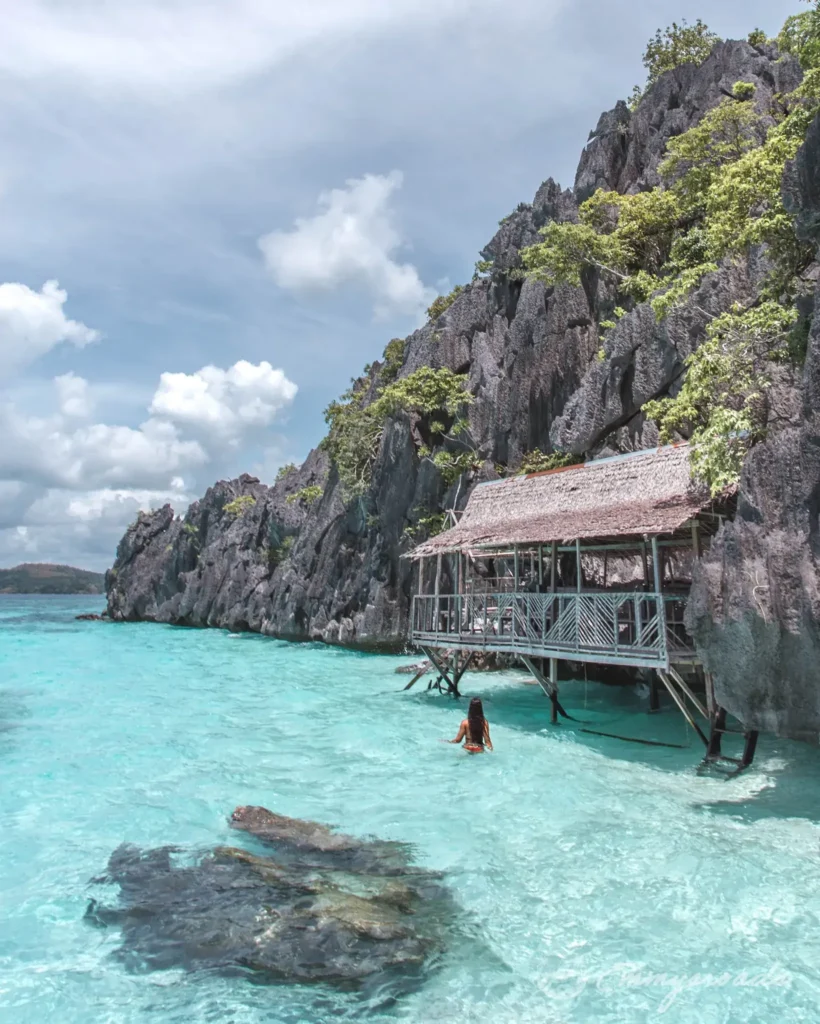
When to Go In The Philippines
The best time to visit the Philippines is between December and April, which is the dry season. This is when the weather is sunny, hot, and perfect for beach hopping, diving, and exploring the islands. If you’re aiming for a quieter experience, consider going during the shoulder months of March or April before the peak tourist rush. However, keep in mind that the Philippines can be quite humid year-round, so pack accordingly!

How to Get Around
Getting around the Philippines is fairly easy – flights between islands are frequent and affordable, so hopping from one to the other is a breeze. Find the best flight here.
For a more local experience (and a way to save a few bucks), you can take boats between islands. But, if you’re looking for something unique, I highly recommend taking a 3-day boat tour from El Nido to Coron. It was one of the highlights of my trip! Imagine sleeping on the beach under the stars, eating fresh food on a boat, and meeting new friends while cruising through some of the most picturesque waters you’ll ever see. It’s the perfect way to experience the authentic Filipino way of life, and it’s something you won’t forget! Swipe to see more pictures about it and reserve your ultimate tour here.
Safety
As a solo traveler, I felt completely safe in the Philippines. The locals are incredibly friendly and welcoming, and I never felt unsafe during my trip. In fact, one of the things that stood out to me the most was just how genuinely kind Filipinos are – they’re helpful, happy, and truly want to make sure you have the best experience possible. Many hostels are clean and comfortable, and I saw plenty of group tours organized by people who had just met, which gave the whole experience a fun, communal vibe. So, whether you’re traveling solo or with friends, the Philippines is a safe and enjoyable destination to explore.
Average Spend
While the Philippines isn’t exactly a budget destination, it’s still relatively affordable compared to other Southeast Asian countries. If you’re a backpacker or looking to keep costs down, you can expect to spend around $40-$60 per day. This includes staying in hostels, eating street food, and using public transportation like tricycles or jeepneys. For those who prefer a bit more comfort, budget around $100-$150 per day for mid-range accommodation, dining in restaurants, and organized tours. And if you’re looking to travel in style (hello, beach resorts and private boat tours), you might spend $200 or more per day. But no matter your budget, the Philippines offers plenty of options to make your dream island getaway come true.
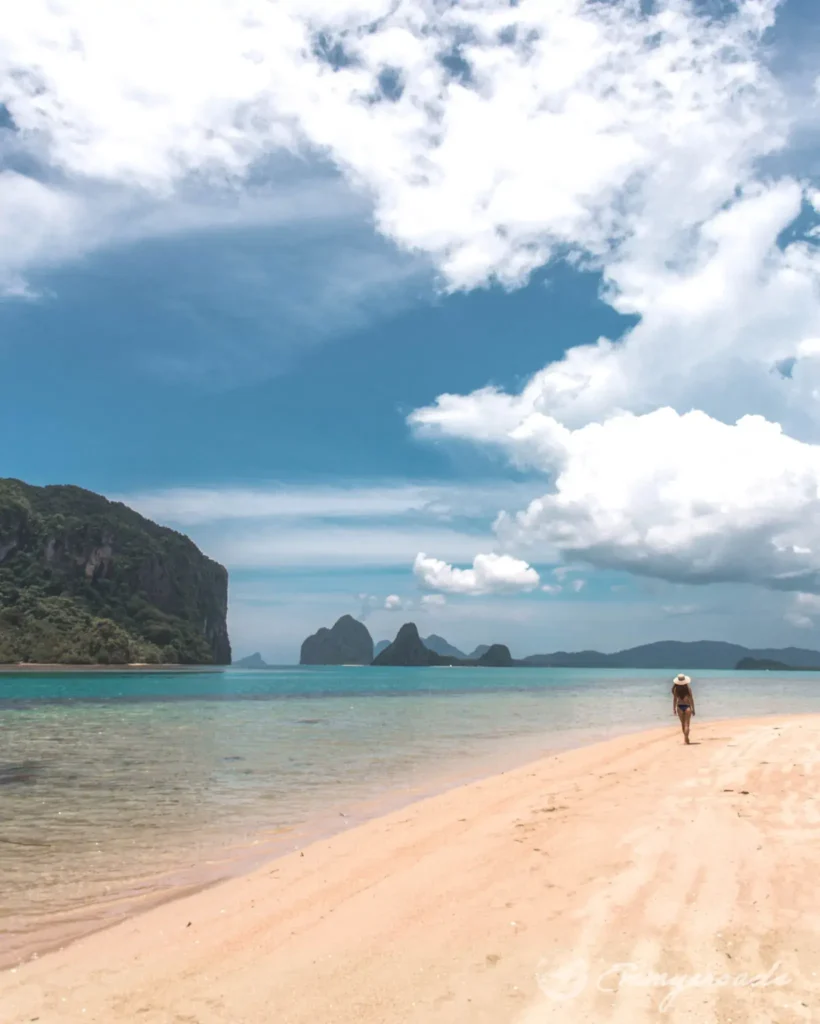
WIFI/Internet Speed and Best Local Travel SIM Card in the Philippines
WIFI and Internet Speed
Internet speeds in the Philippines can be inconsistent. In major cities like Manila and Cebu, many accommodations, cafes, and coworking spaces offer decent WIFI, but speeds can drop during peak hours or in rural areas. If reliable internet is essential, consider staying in hotels or Airbnbs that specifically advertise high-speed connections.
Stay secure and unlock better deals with a VPN! Protect your data, access cheaper flights, and keep streaming your favorite Netflix shows from anywhere. Fast, private, and hassle-free browsing wherever you go! Get yours here.
Best Local Travel SIM Card
The top choices for travelers are Globe and Smart, the two major telecom providers in the Philippines.
- Globe: Best for urban areas and popular tourist destinations. Globe offers excellent coverage in Luzon, Visayas, and major parts of Mindanao, including Cebu, El Nido, and Coron.
- Smart: Offers broader coverage in rural and remote areas, making it a good option for island-hopping adventures.
Where to Buy: SIM cards are widely available at airports, convenience stores, and official retail shops. You can purchase a prepaid SIM card for as little as PHP 40–100 (approximately $0.70–$1.75 USD), with affordable data packages starting at PHP 50 (around $0.90 USD) for 1GB/day.
Pro Tip: Choose a package with “unlimited social media” perks to save data when posting those Instagram-worthy beach photos.
Or skip the hassle of hunting for a local SIM, Airalo gives you instant, affordable, and hassle-free connectivity the moment you land. No physical SIMs, no surprise fees, just seamless data in multiple countries with one easy app. Stay connected smarter, check options here.
FAQ
Frequently Asked Questions About the Philippines
Most travelers can enter the Philippines visa-free for stays of up to 30 days, provided they have a passport valid for at least six months and an onward or return ticket. Some nationalities may require a visa or an extension for longer stays. Always check with the Philippine consulate or embassy in your country before traveling.
The official currency is the Philippine Peso (PHP). You can exchange money at banks, currency exchange counters, or ATMs. Major cities and tourist areas have ATMs that accept international cards, but it’s advisable to carry cash when traveling to remote islands. Exchange rates are typically better at local money changers than at airports.
Public transportation in the Philippines includes jeepneys, tricycles, buses, and ferries. While it’s affordable and offers a unique local experience, it can be unpredictable and crowded, especially in urban areas. For more comfort and reliability, consider ride-hailing apps like Grab in cities or renting a scooter on the islands.
Final Thoughts About The Philippines
So, is the Philippines worth it? Absolutely! It’s a tropical haven full of friendly people, pristine beaches, and amazing experiences. Whether you’re diving into the blue waters of Coron, island hopping in El Nido, or exploring the culture and waterfalls of Cebu, you’ll find something unforgettable at every turn. Just be prepared – once you go, you’ll never want to leave!
Just before you go: Travel insurance is a must-have for any trip—whether it’s covering medical emergencies, trip cancellations, or lost luggage, it’s your reliable backup plan. Stay worry-free and focus on the adventure, knowing you’re protected no matter what happens! Get protected here.


